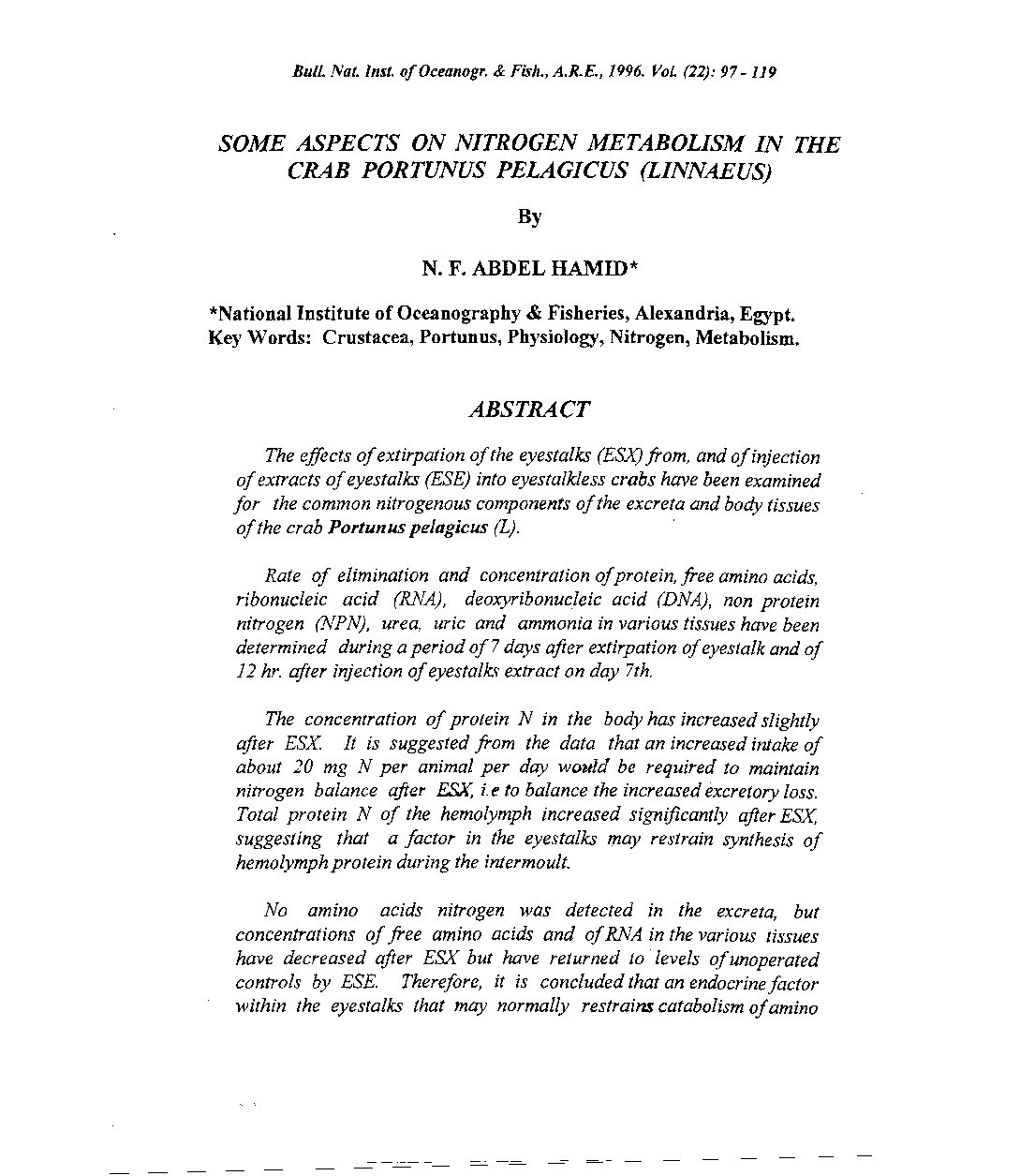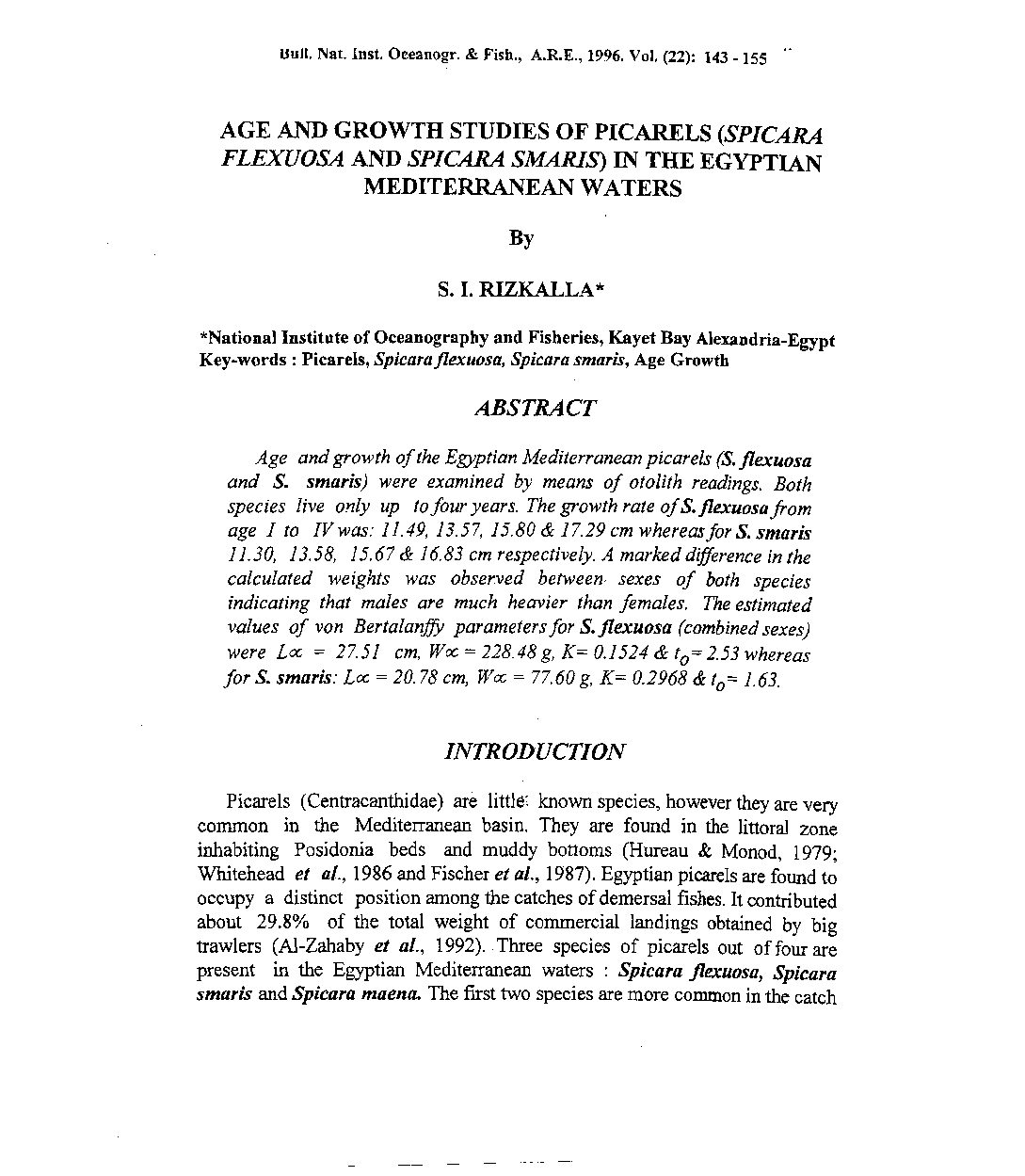Categories
vol-22SOME ASPECTS ON NITROGEN METABOLISM IN THE
CRAB PORTUNUS PELAGICUS (LINNAEUSj
By
N. F. ABDEL HAMID*
*National Institute of Oceanography & Fisheries, Alexandria, Egypt.
Key Words: Crustacea, Portunus, Physiology, Nitrogen, Metabolism.
ABSTRACT
The effects ofextirpation ofthe eyestalks (ESX) from, and ofinjection
ofextracts ofeyestalks (ESE) into eyestalkless crabs have been examined
for the common nitrogenous components ofthe excreta and body tissues
ofthe crab Portunus pelagicus (L). ”
Rate of elimination and concentration ofprotein, free amino acids,
ribonucleic acid (RNA), deoxyribonucleic acid (DNA), non protein
nitrogen (NPN), urea, uric and ammonia in various tissues have been
determined during a period of 7 days after extirpation ofeyestalk and of
12 hr. after injection ofeyestalks extract on day 7th.
The concentration of protein N in the body has increased slightly
after ESX It is suggested from the data that an increased intake of
about 20 mg N per animal per day would be required to maintain
nitrogen balance after ESX, i. e to balance the increased excretory loss.
Total protein N of the hemolymph increased significantly after ESX,
suggesting that a factor in the eyestalks may restrain synthesis of
hemolymph protein during the intermoult.
No amino acids nitrogen was detected in the excreta, but
concentrations of free amino acids and ofRNA in the various tissues
have decreased after ESX but have returned to “levels ofunoperated
controls by ESE. Therefore, it is concluded that an endocrine factor
within the eyestalks that may normally restrains catabolism ofamino







